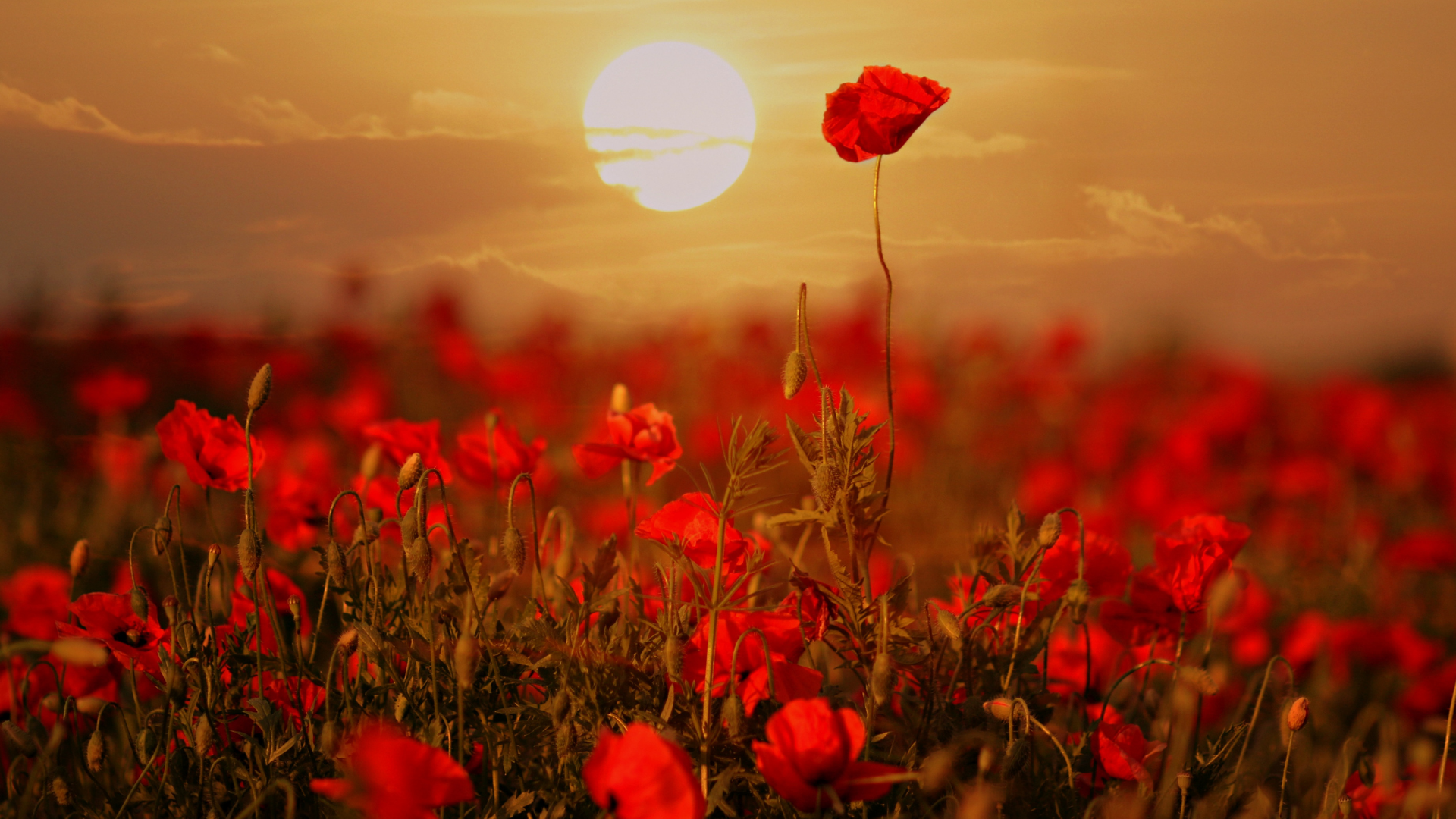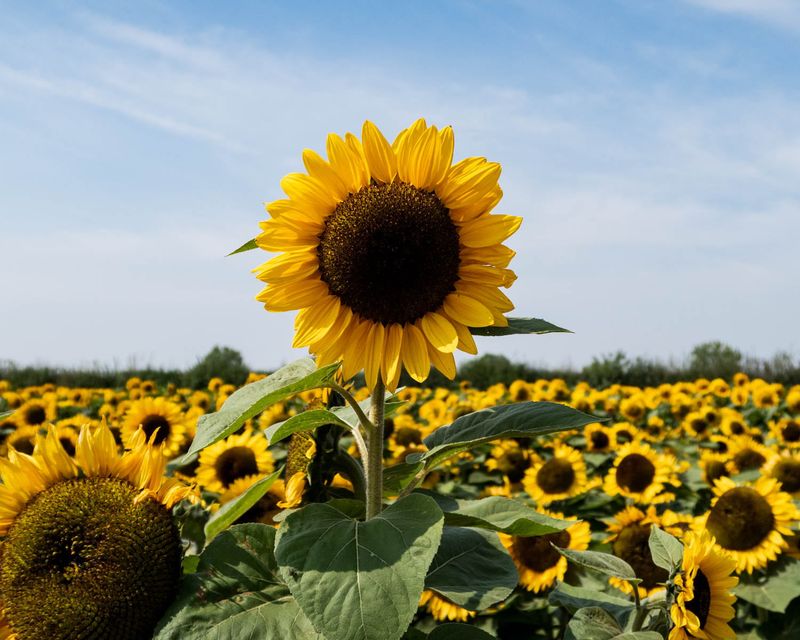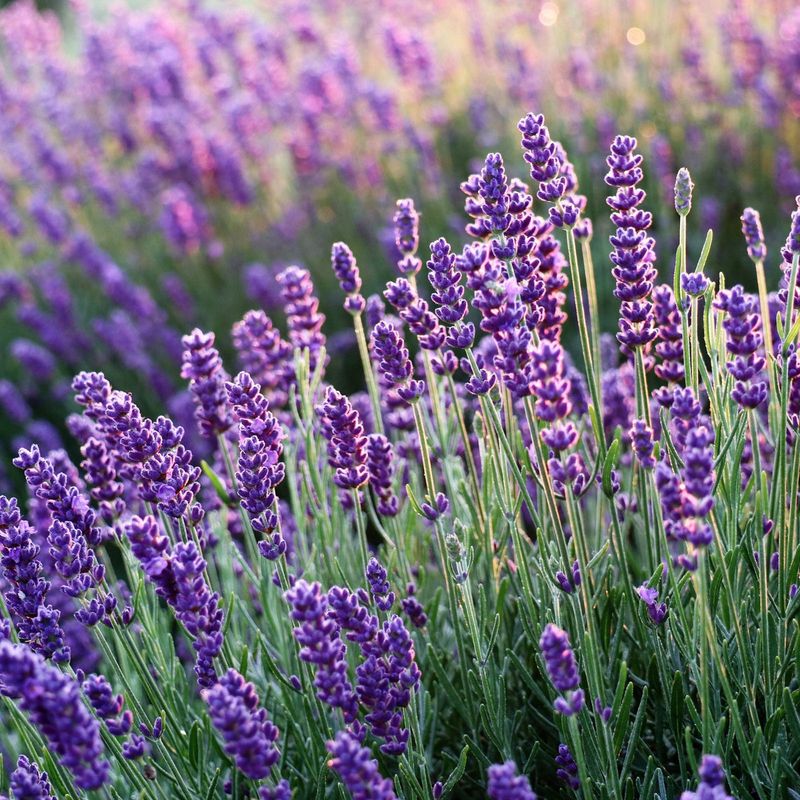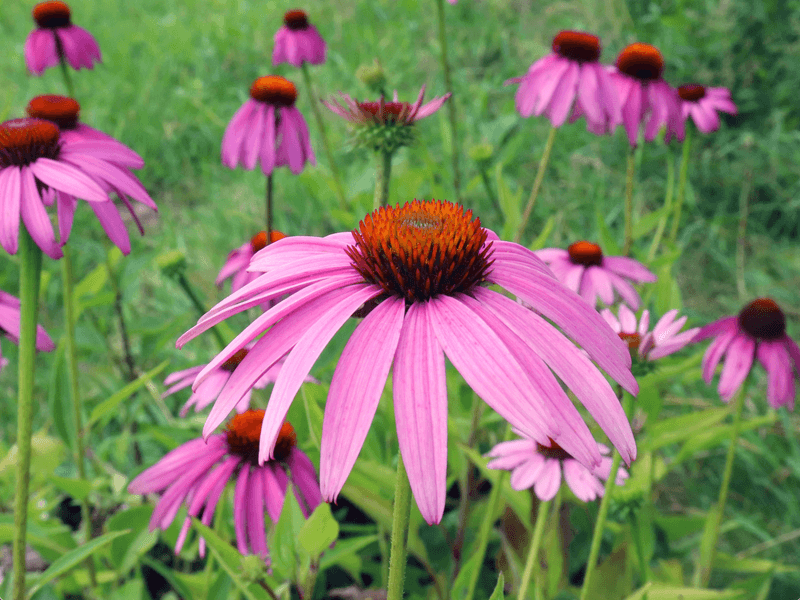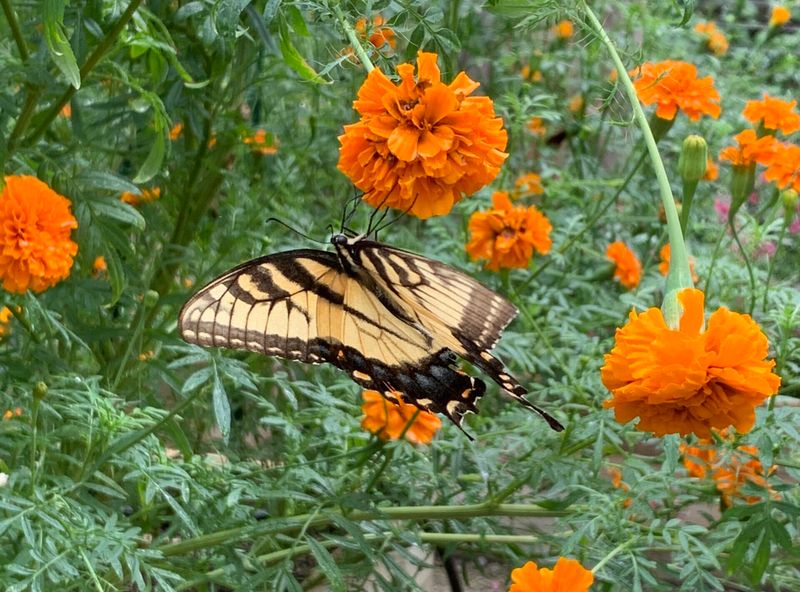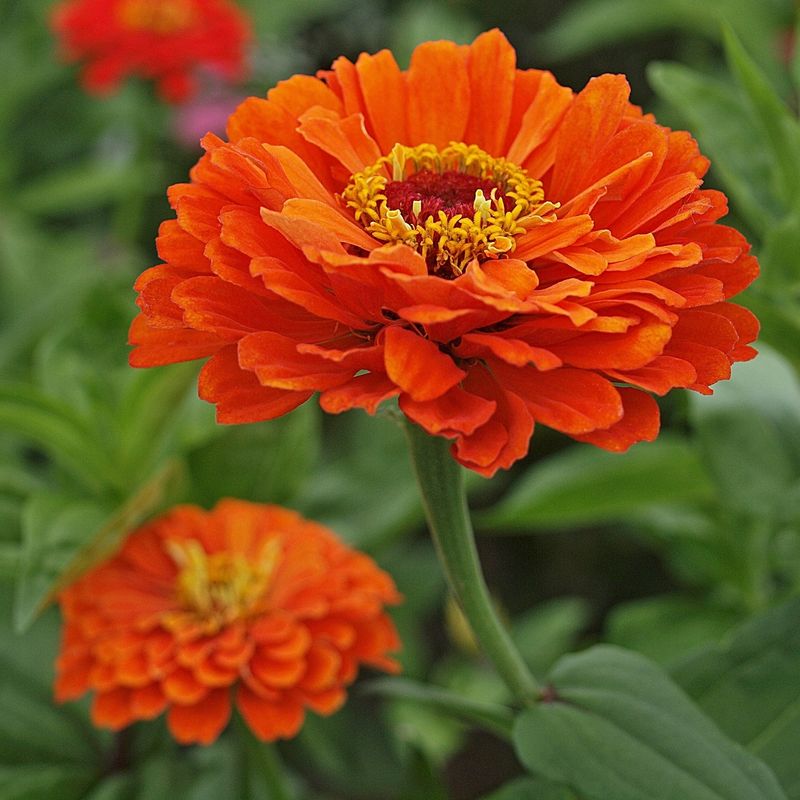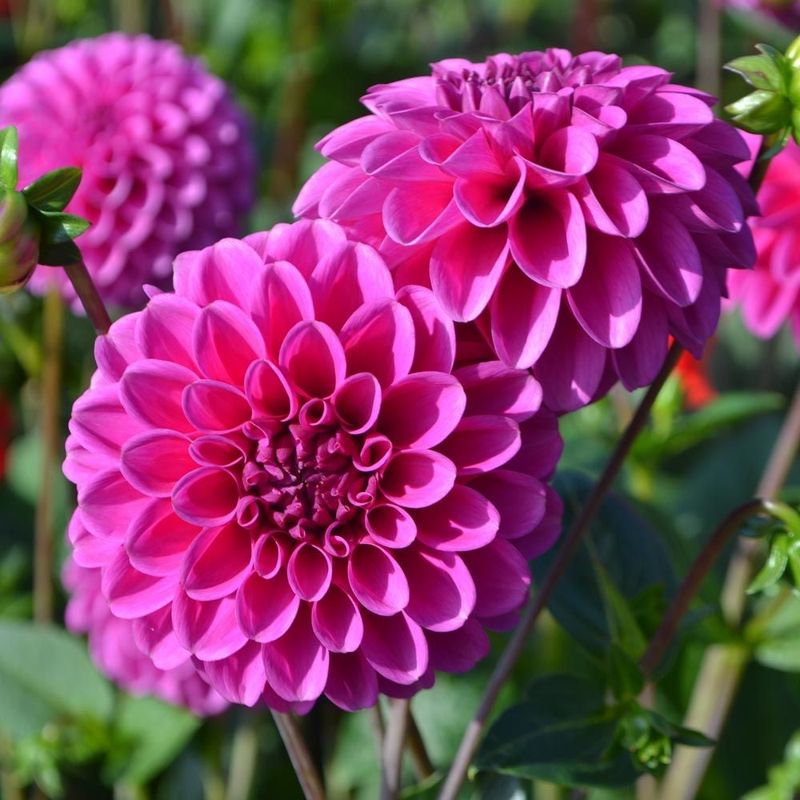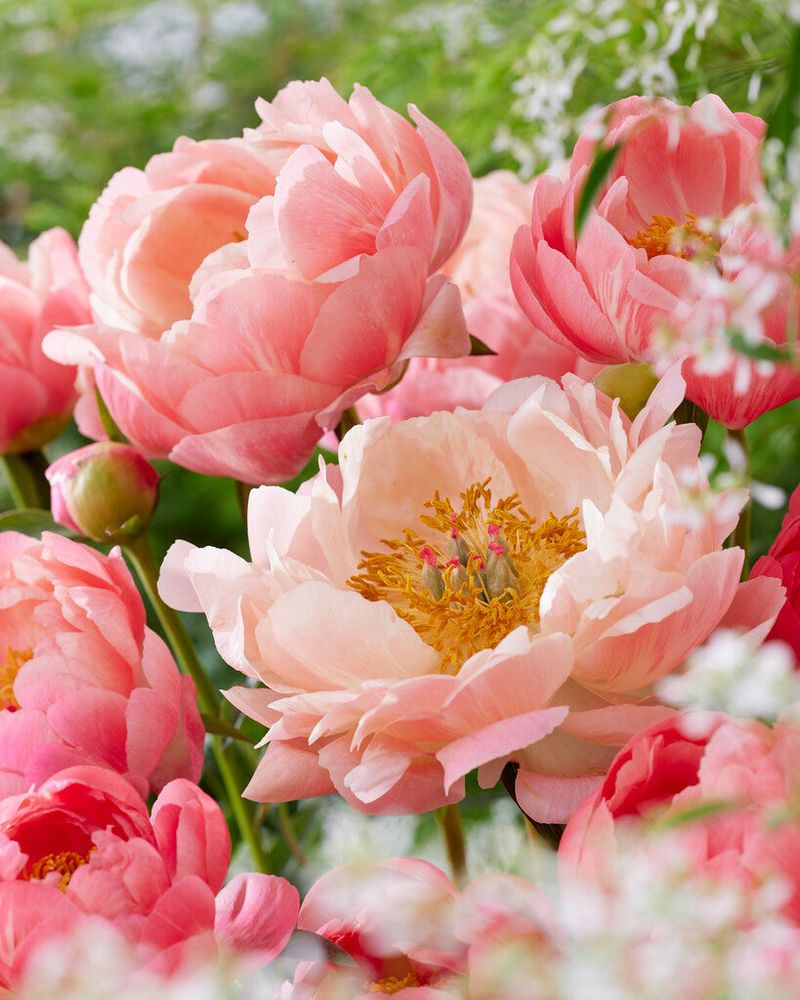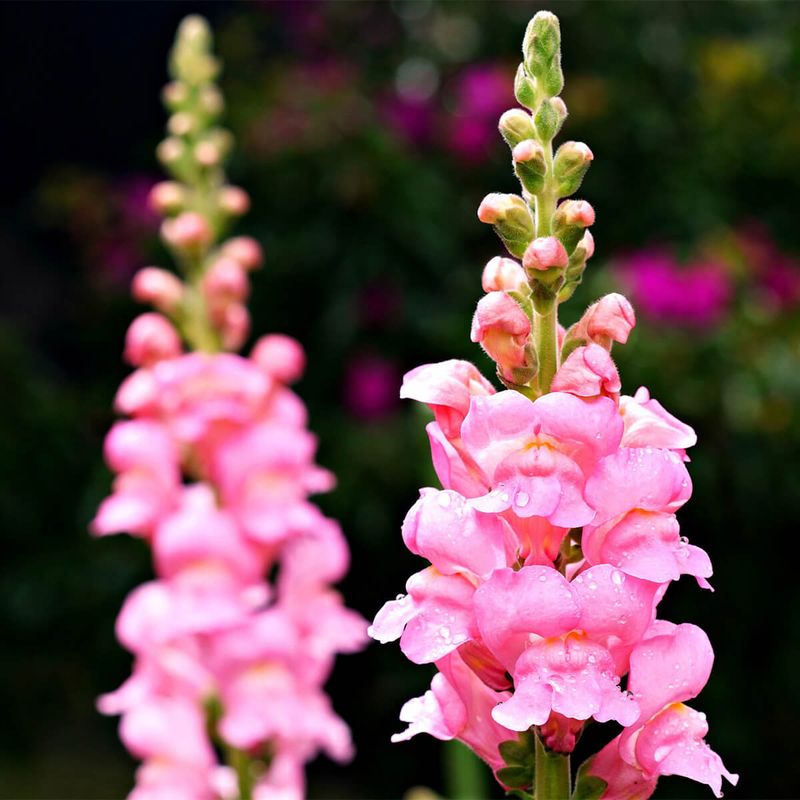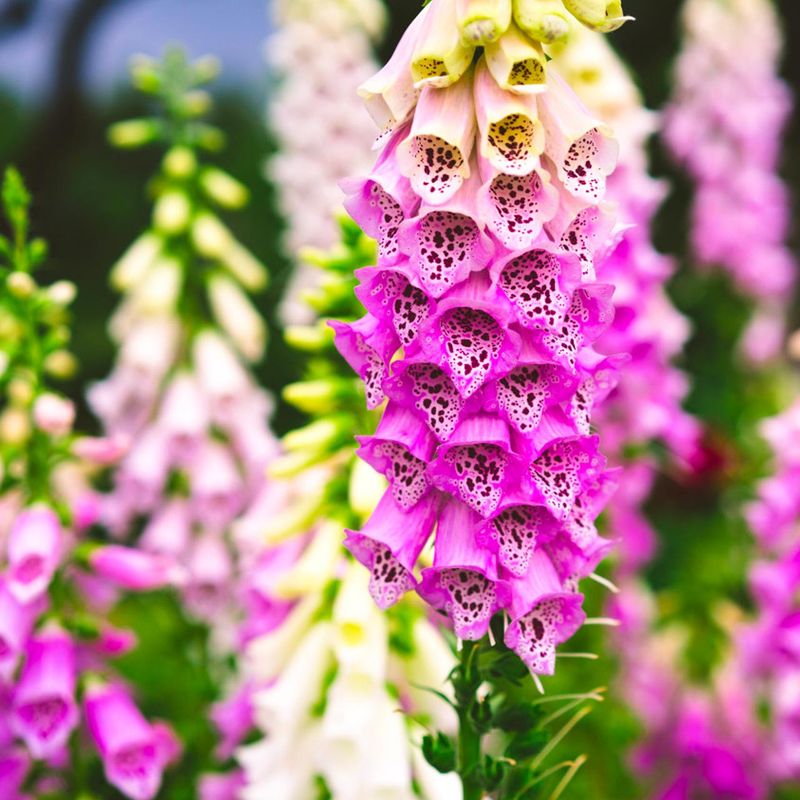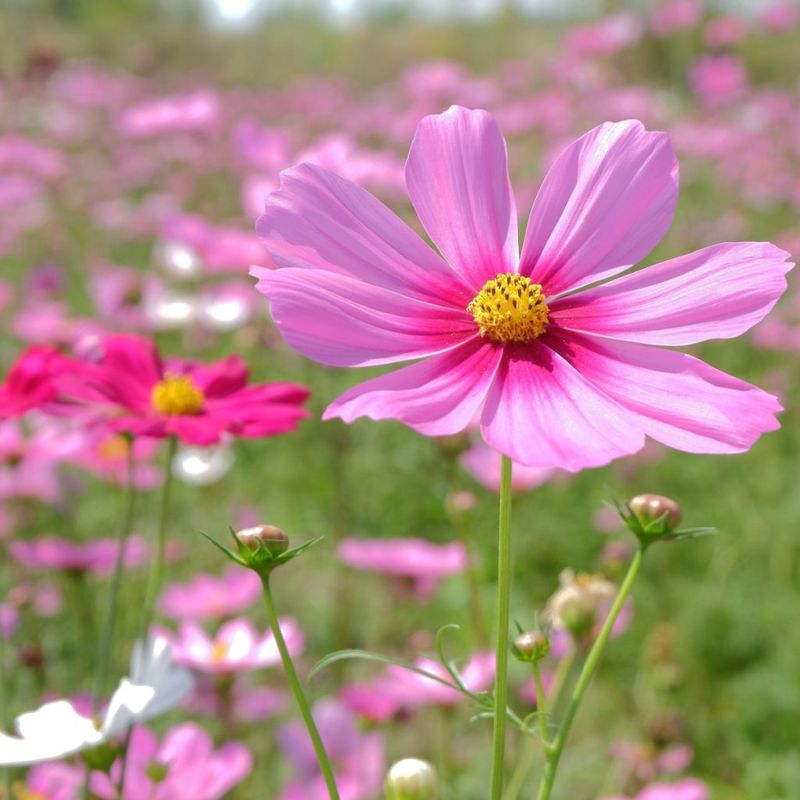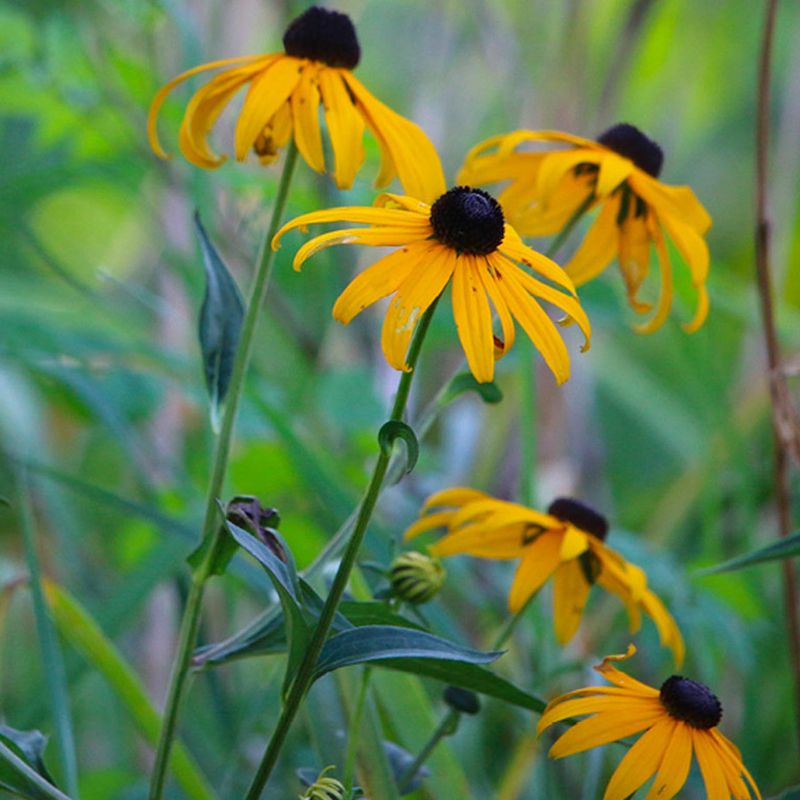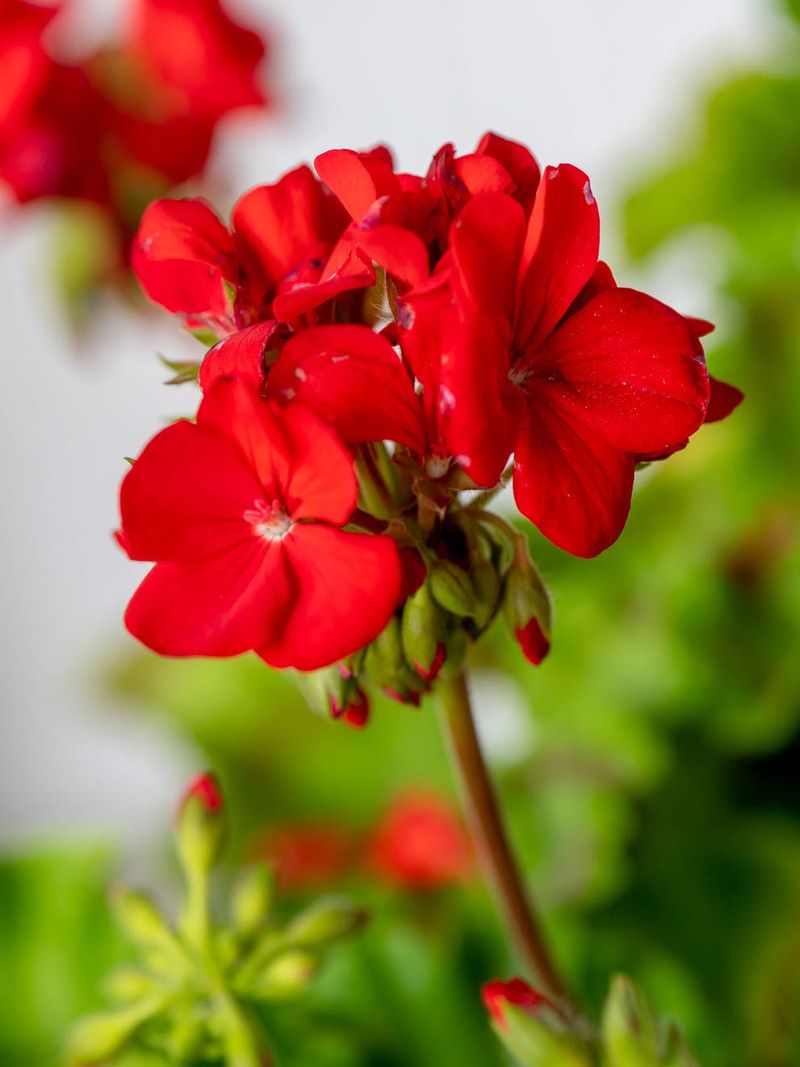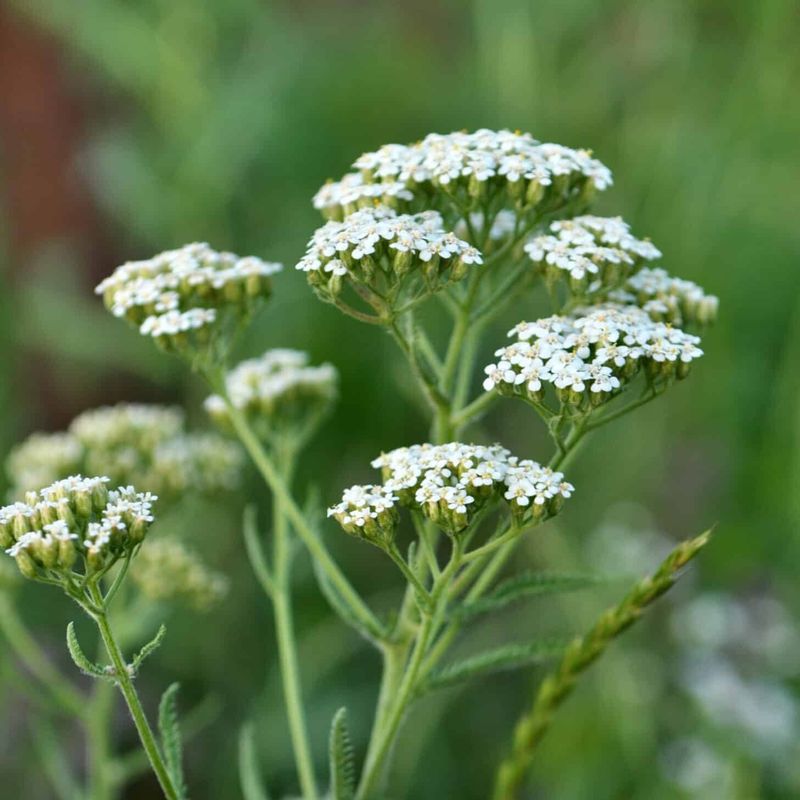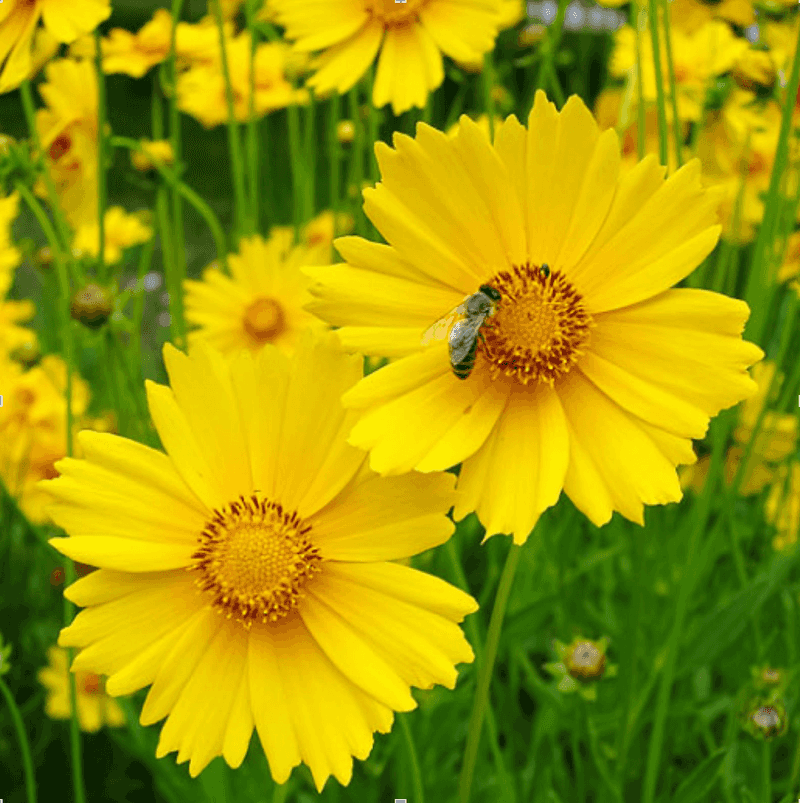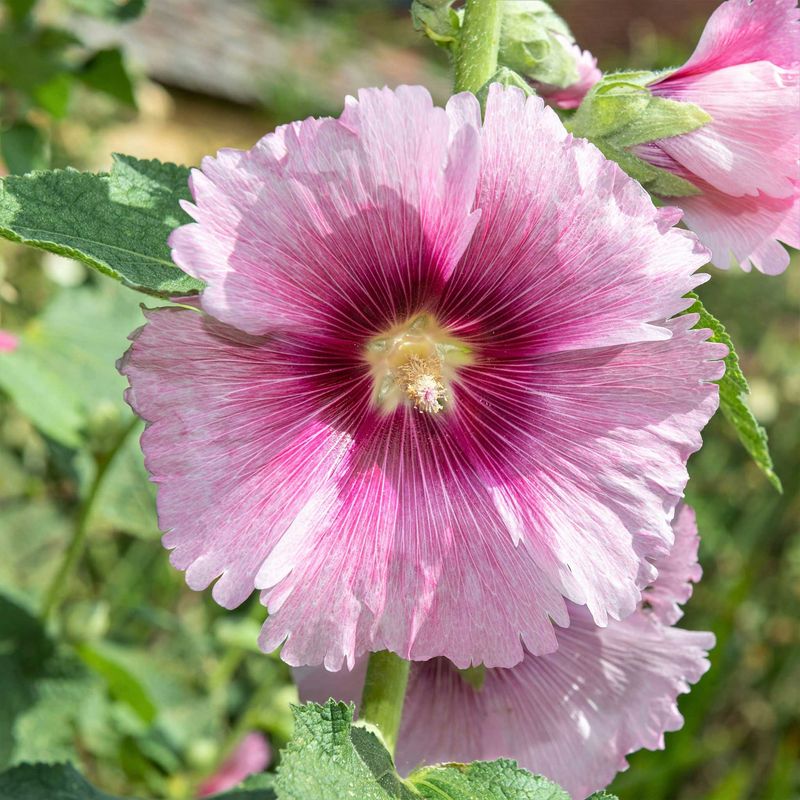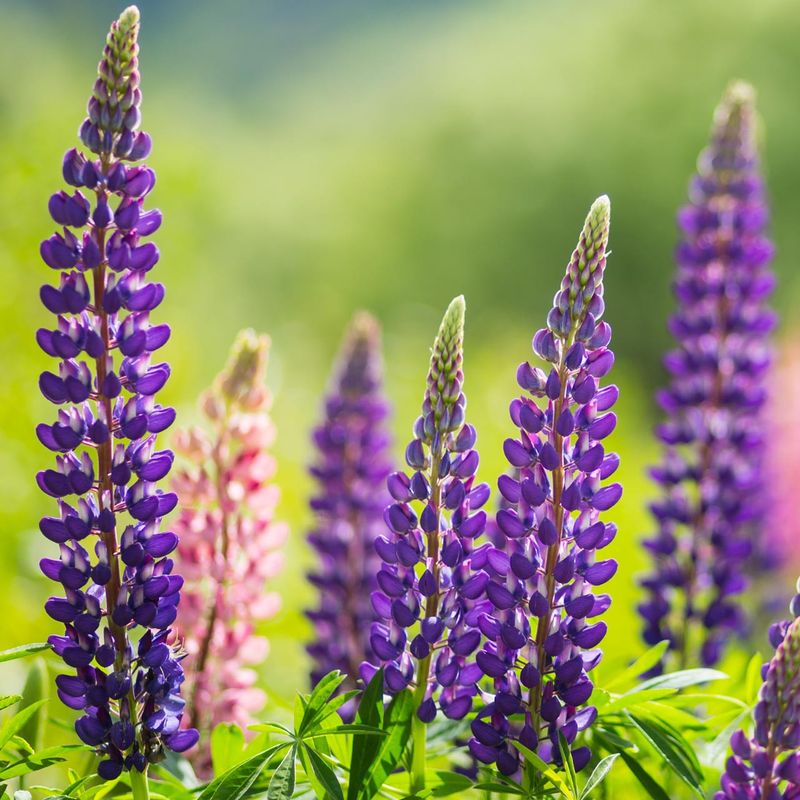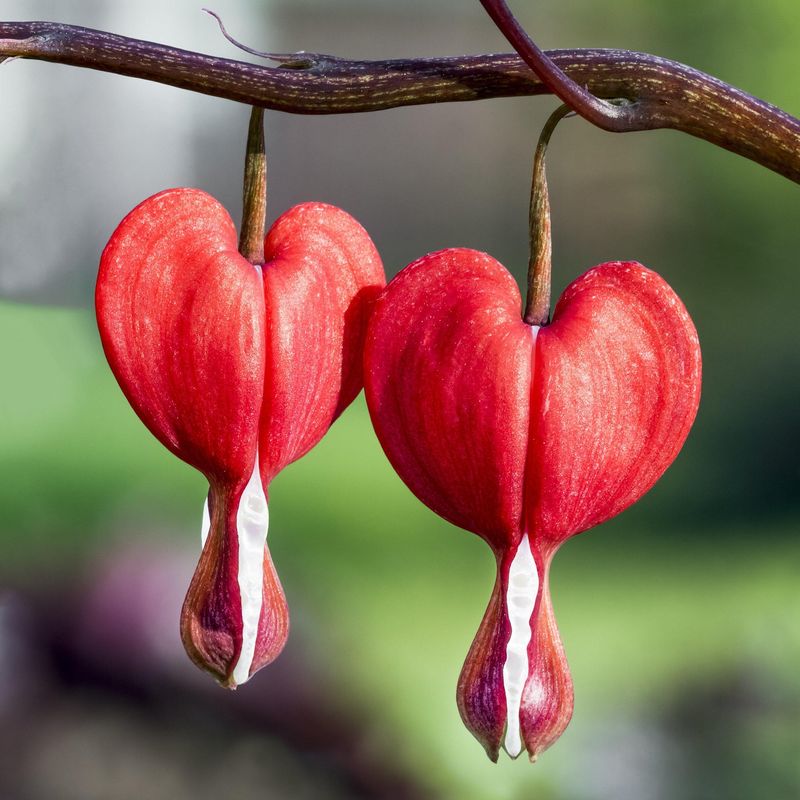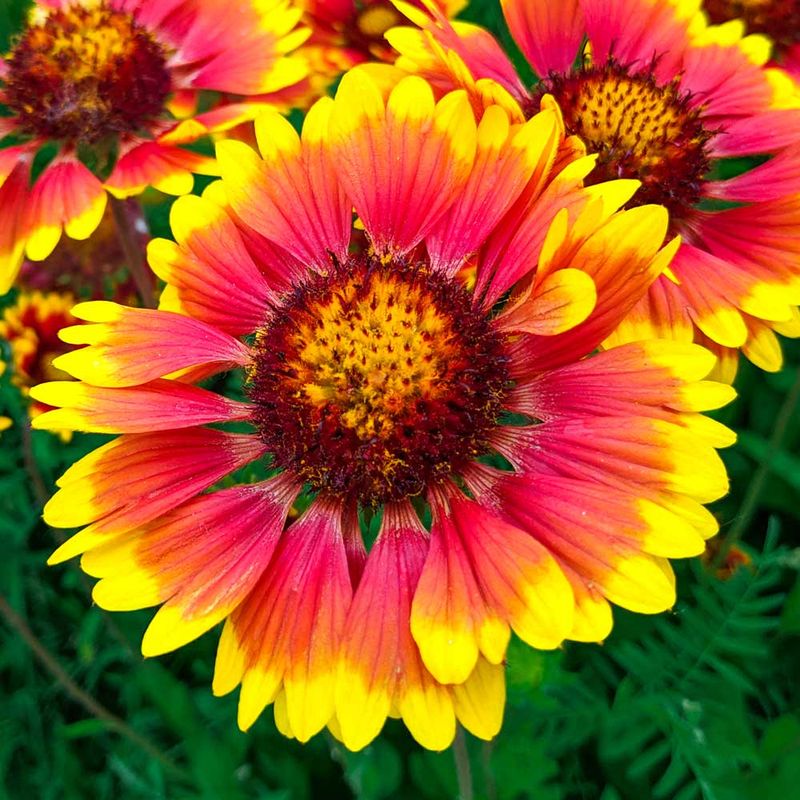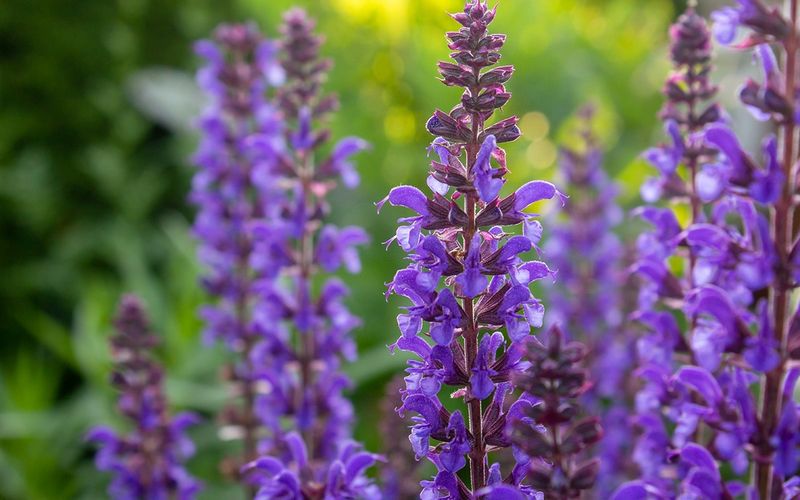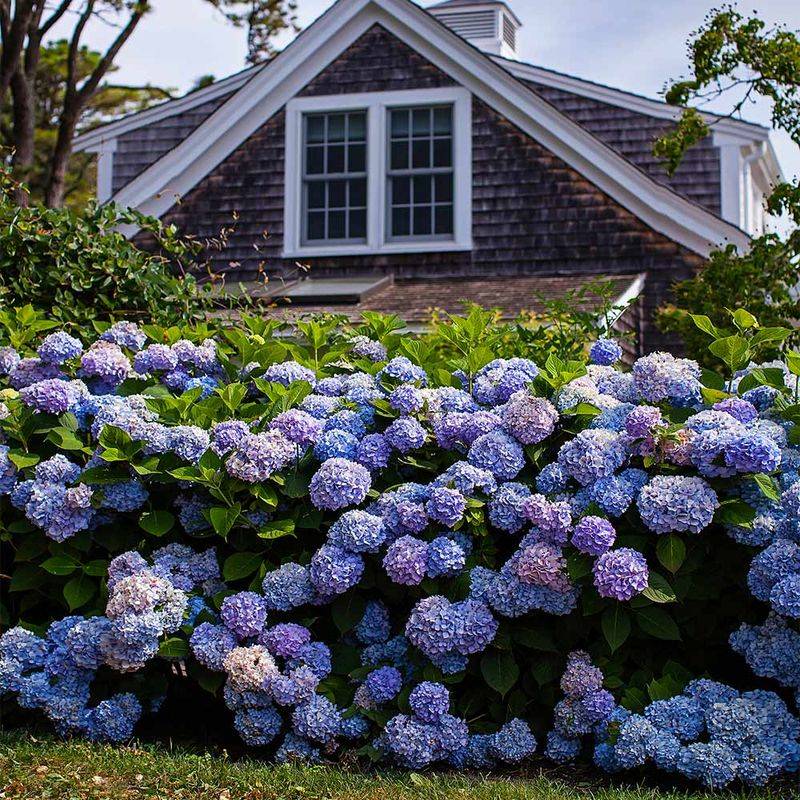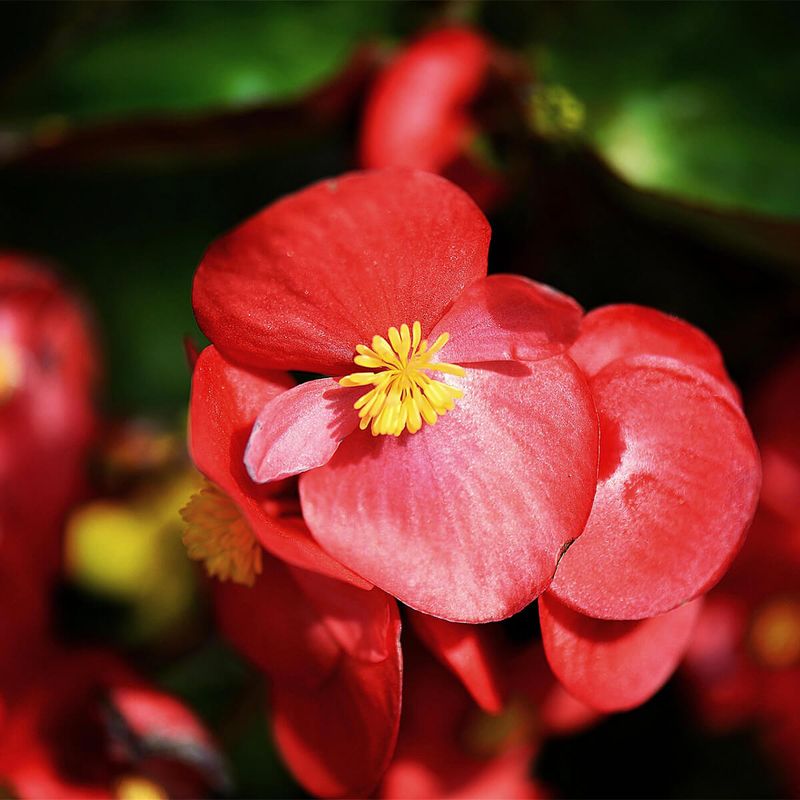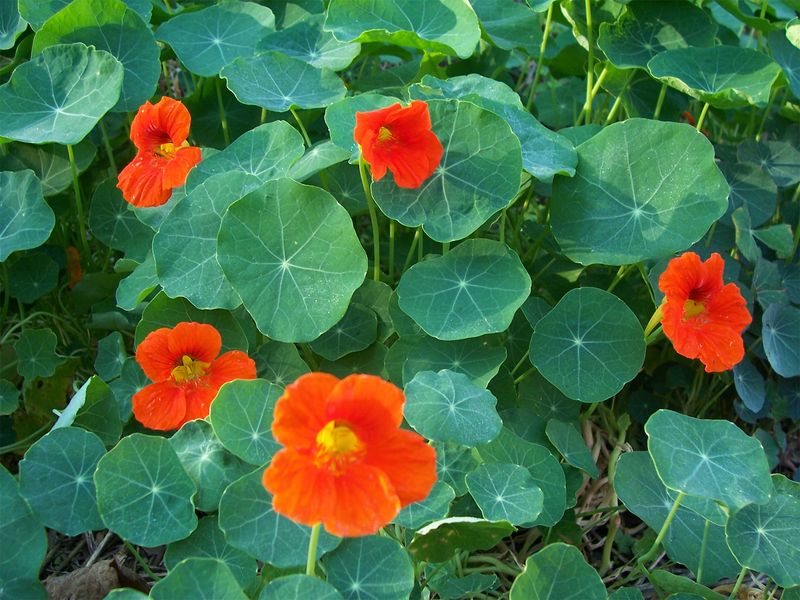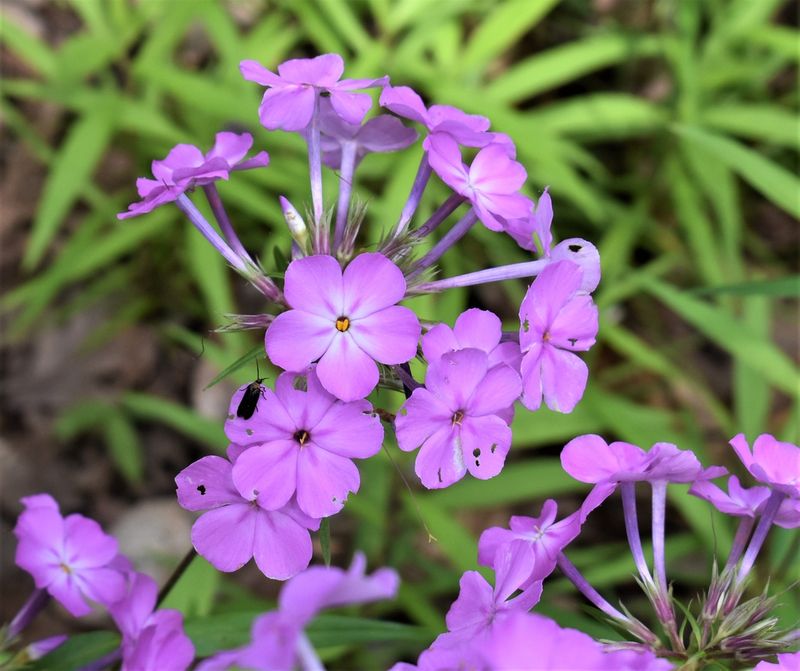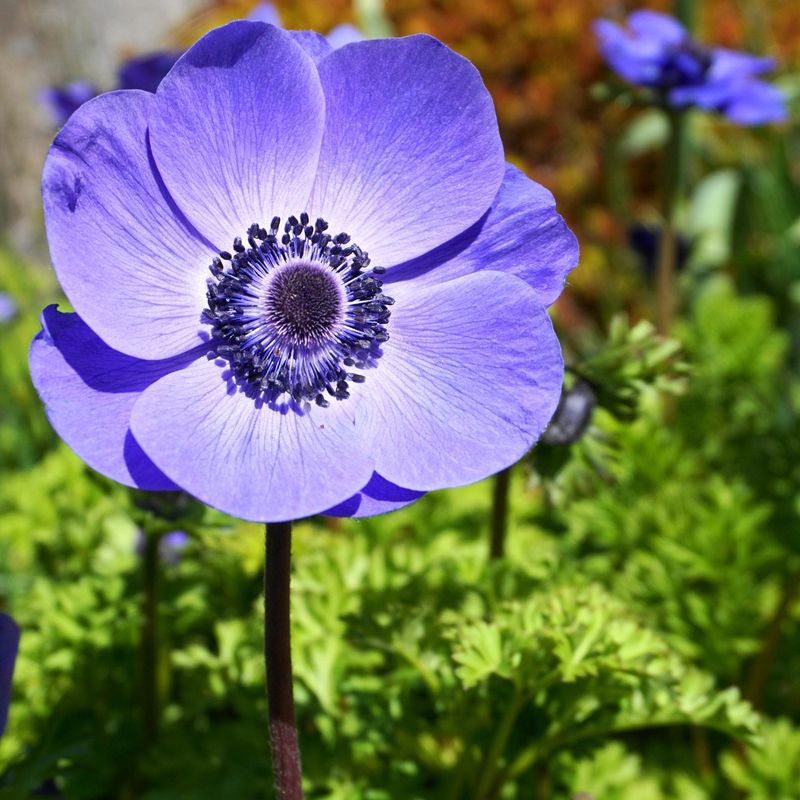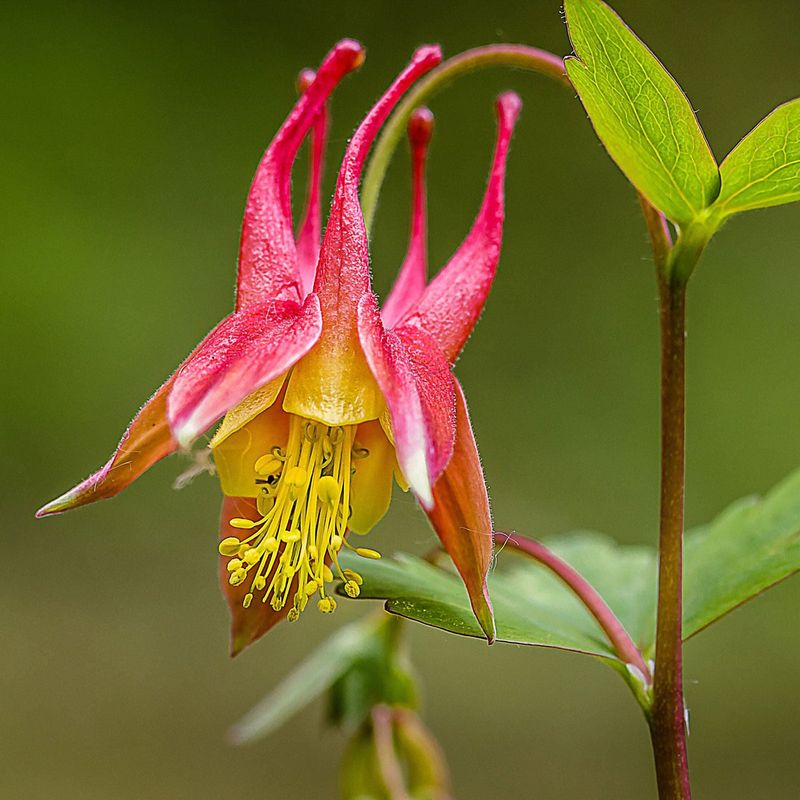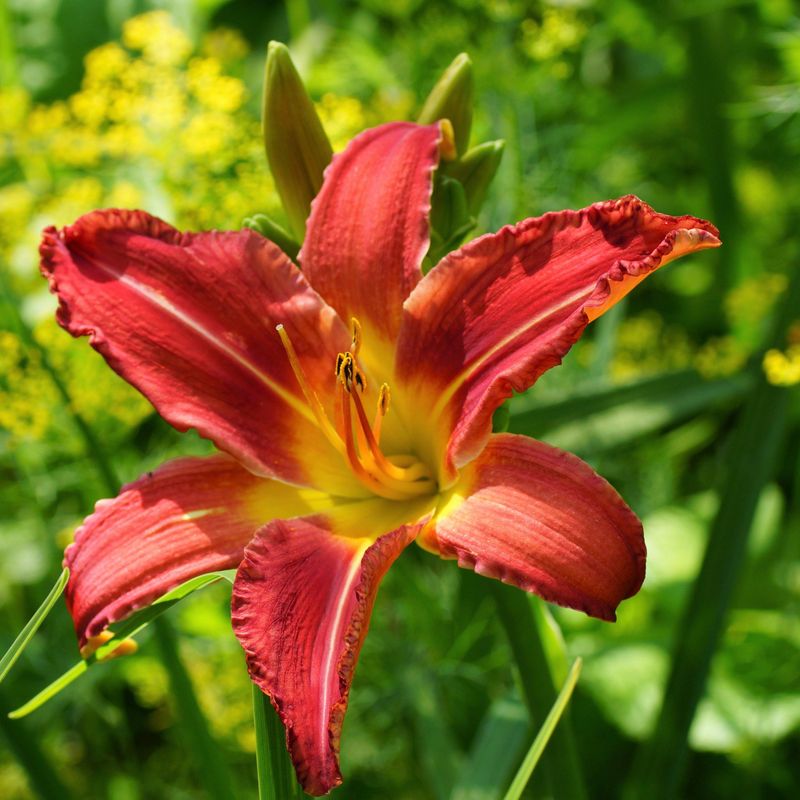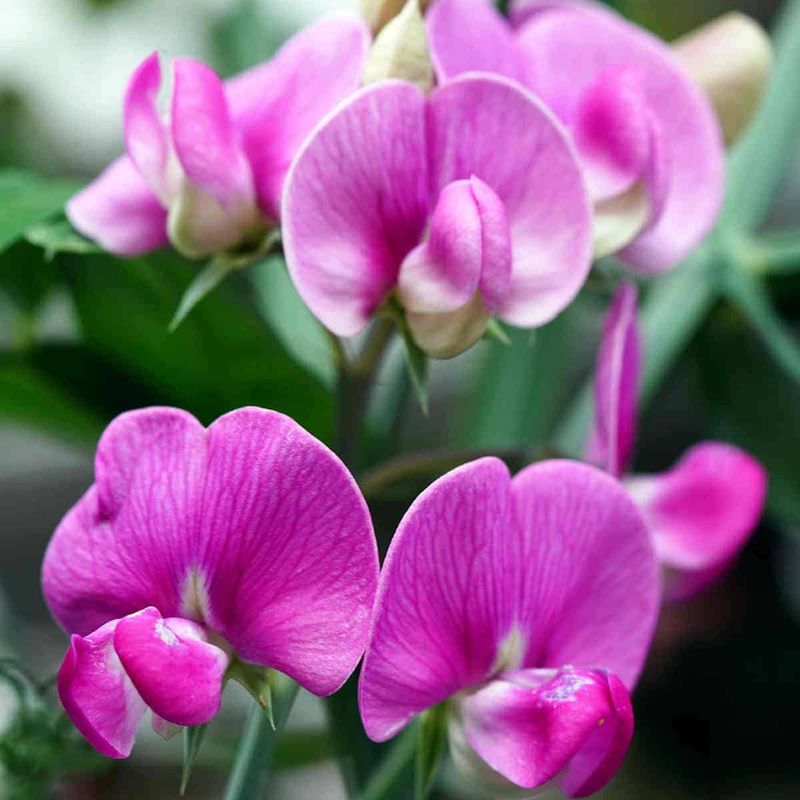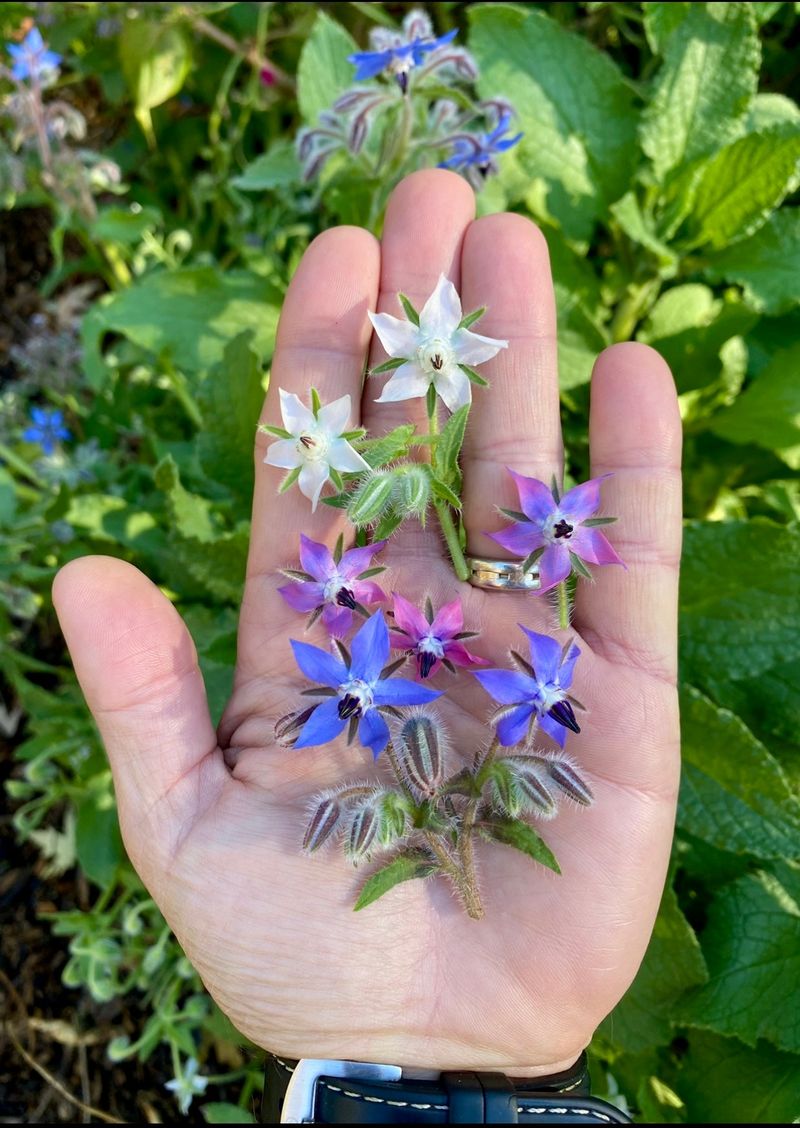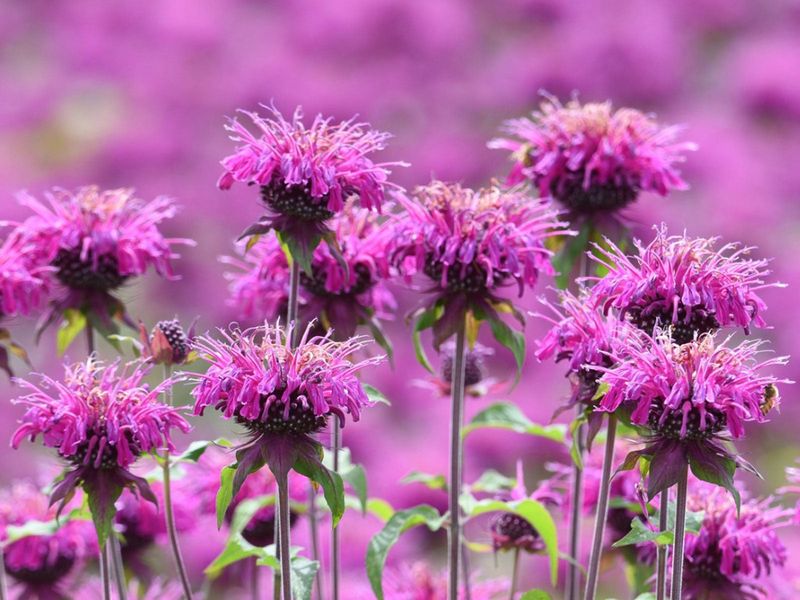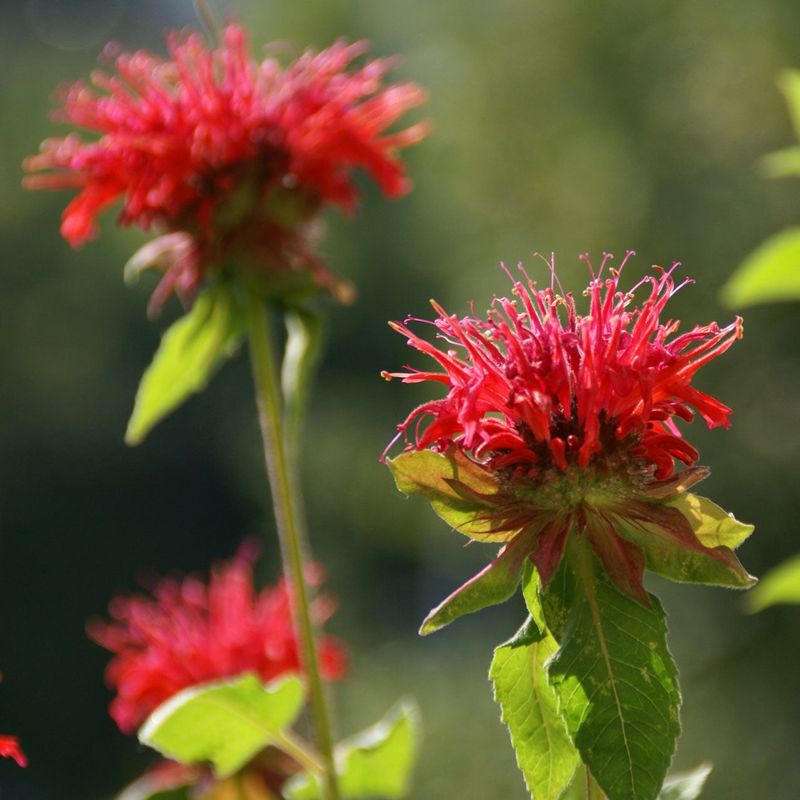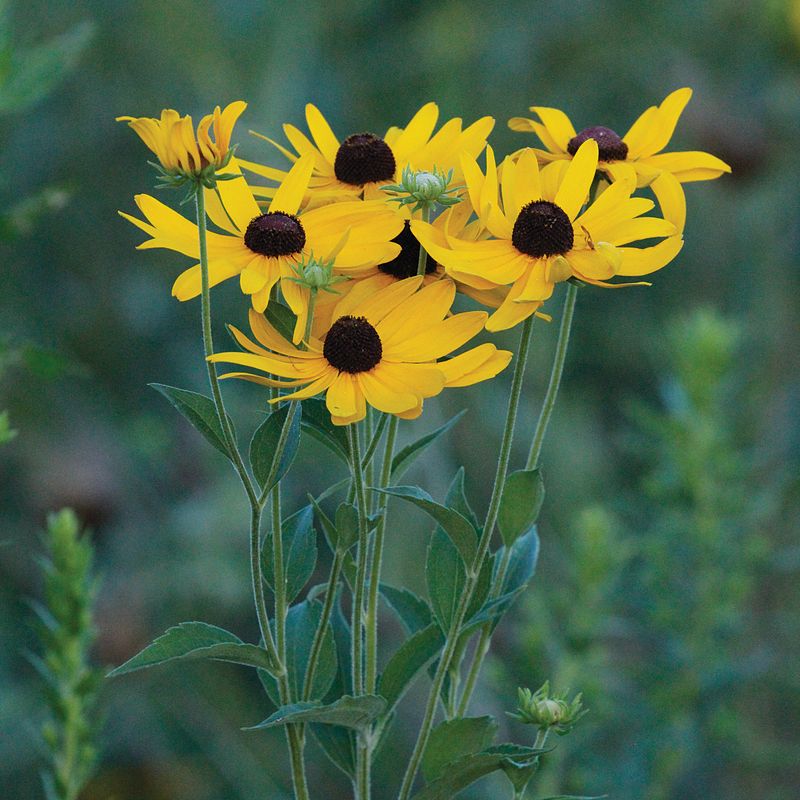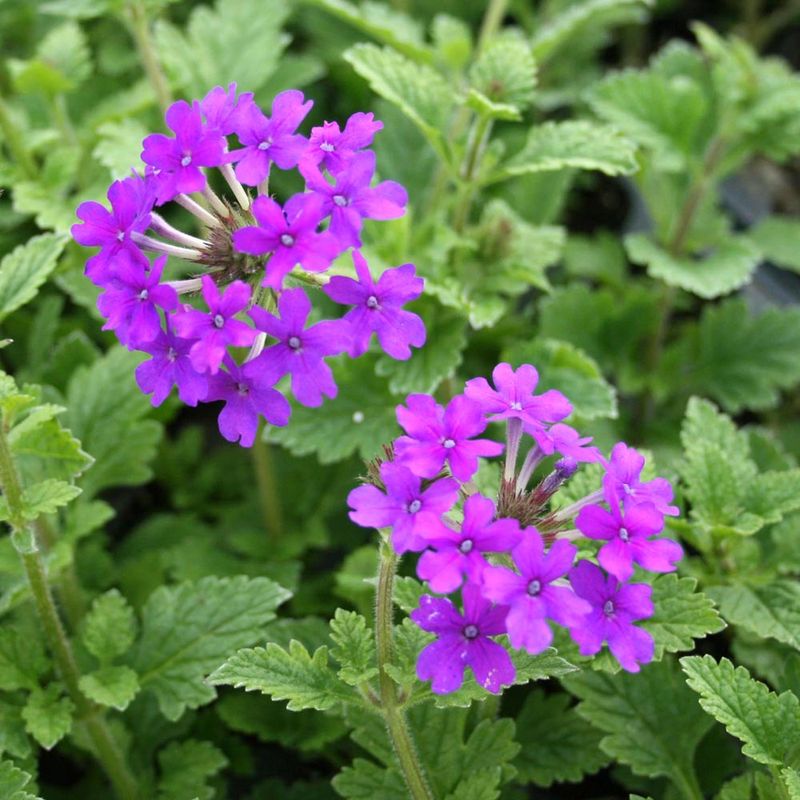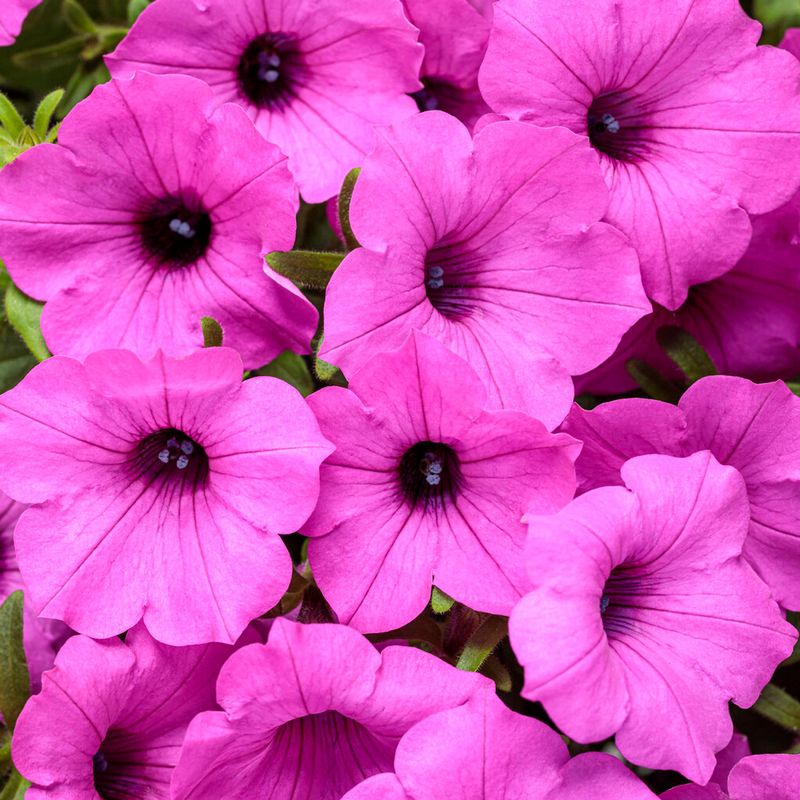Growing poppies is a gardener’s dream, but let’s be real, there’s a whole world of amazing plants out there! I’ve lost count of how many times I’ve stood in a garden center, paralyzed by choice.
I remember once debating for a solid hour whether to pick one plant over another, only to realize there were so many stunning poppy alternatives! That’s when the fun started.
So, I decided to explore and found 35 plants, each with its own unique charm. Grab your gloves, let’s dive into this green adventure and transform your garden into a true masterpiece!
1. Sunflower
Imagine a majestic beacon of gold swaying in the breeze. The sunflower isn’t just a feast for the eyes; it’s a symbol of positivity and warmth.
Unlike poppies, which can fade quickly, these golden giants offer long-lasting beauty and can even provide tasty seeds if you fancy a snack.
Perfect for adding height and drama to any garden, sunflowers are remarkably easy to grow from seeds. They don’t mind poor soil, making them a resilient choice. Watch as birds flock to your garden, adding even more life to the scene.
2. Lavender
Step into a world of calm with the soothing allure of lavender. Known for its calming aroma, lavender is perfect for those who enjoy tranquility in their gardens.
Beyond its scent, it boasts a stunning purple hue that rivals any poppy’s allure. Drought-tolerant and easy to maintain, lavender is an excellent choice for gardeners who crave low-maintenance beauty.
Its fragrant blooms attract beneficial insects, turning your garden into a buzzing hub of life. Plus, you can dry it for various uses around the home.
3. Coneflower
An assemblage of pink petals surrounds a distinct orange center. That’s the coneflower, a resilient and eye-catching beauty. Unlike poppies, coneflowers are perennial, rewarding you with blooms year after year.
Their striking appearance is matched by their hardiness. Coneflowers are highly adaptable, withstanding droughts and attracting a profusion of pollinators.
If you’re looking for a plant that’s as tenacious as it is beautiful, the coneflower is your garden’s newest star.
4. Marigold
A burst of sunshine captured in petals, marigolds are a gardener’s delight. Their hues add a cheerful touch to any space, making them a superb alternative to poppies.
Not only do they brighten your garden, but they also repel pests naturally. Marigolds are versatile companions in vegetable gardens, keeping unwanted critters at bay.
Easy to grow, they thrive in various soil types and conditions, ensuring your gardening success. With marigolds, you’re not just planting flowers; you’re cultivating a natural defense system.
5. Zinnia
These flowers offer a mix that can outshine any poppy patch. Known for their daisy-like heads, zinnias are a surefire way to bring diversity to your garden.
They are low maintenance and flourish even if neglected. Their bold blooms are a magnet for butterflies, turning your garden into an enchanting sanctuary.
Plus, they make excellent cut flowers, brightening your home with minimal effort.
6. Dahlia
A garden showstopper with layers of intricate petals. The dahlia is a true testament to floral artistry, offering a visual feast far beyond the poppy’s reach.
With blooms that vary in size and color, dahlias are the chameleon of gardens. Dahlias thrive in sunny spots and can be grown from tubers or seeds.
They do require a bit of care, but their spectacular flowers are worth the effort. Whether you’re aiming for drama or elegance, dahlias won’t disappoint.
7. Peony
Peonies offer an unmatched opulence in the garden world. These blooms are the epitome of grace and elegance, serving as a superb poppy alternative for those seeking something more grandiose.
Though slow to establish, once in bloom, peonies reward patience with their stunning flowers. Their fragrance is captivating, drawing admiration from all who pass by.
Hardy and long-lived, a well-cared-for peony can become a garden heirloom for generations.
8. Snapdragon
Snapdragons add a touch of magic with their dragon-like mouths. They offer a playful alternative to poppies, with colors that span the rainbow.
Great for borders and containers, snapdragons are surprisingly resilient. They thrive in cooler weather, extending the flowering season well into autumn.
Not only do they provide visual interest, but their unique shape also makes them a conversation starter.
9. Foxglove
Tall and elegant, foxgloves bring a touch of the wild to any garden. Their bell-shaped blooms hang gracefully, offering a nod to the whimsical.
These biennials are a fantastic choice for adding vertical interest and work well in cottage-style gardens. While they require a bit of patience to bloom, foxgloves’ stunning display is well worth the wait.
Just be sure to keep them away from pets and small children, as they’re not as innocent as they look.
10. Cosmos
Light and airy, cosmos flowers bring a carefree elegance to any setting. While poppies might steal the show briefly, cosmos offer a more enduring charm.
These annuals are easy to grow from seed and require minimal care, making them perfect for novice gardeners.
Their delicate blooms attract bees and butterflies, turning your garden into a lively ecosystem. Enjoy cosmos in cut flower arrangements for a touch of nature indoors.
11. Black-eyed Susan
Radiating with sunny petals, black-eyed Susans are a beacon of cheer. Their bold yellow blooms stand out dramatically against their dark centers, offering a striking visual contrast.
A prominent player in native plantings, black-eyed Susans are hardy and drought-resistant. They provide essential nectar for pollinators and make excellent companions to other perennials.
Let these flowers grace your garden and watch them steal the show effortlessly.
12. Geranium
A stalwart choice for gardeners seeking reliability. Geraniums offer a range of colors and forms, making them a versatile poppy substitute.
These tough plants thrive in containers or garden beds, demanding little more than occasional watering. Their blooms are continuous throughout the growing season, providing ongoing beauty.
Geraniums are perfect for adding a splash of color to any space without overcomplicating care routines.
13. Yarrow
A blend of ruggedness and charm, yarrow offers a different kind of beauty. Its flat-topped clusters contrast wonderfully with poppies’ rounder forms.
Yarrow is drought-tolerant and great for filling gaps in borders. It attracts a range of beneficial insects, enhancing the biodiversity of your garden.
Durable and low-maintenance, yarrow is perfect for those who prefer a laid-back approach to gardening.
14. Coreopsis
The cheerful daisy-like blooms of coreopsis never fail to bring joy. With their sunny disposition, they are a delightful alternative to poppies.
Coreopsis is a perennial favorite that offers long-lasting blooms and requires minimal care. Their vivid flowers attract pollinators, encouraging a lively garden ecosystem.
Ideal for borders and rock gardens, coreopsis adds a splash of sunshine wherever it grows.
15. Hollyhock
Standing tall with a regal presence, hollyhocks offer a dramatic vertical element. They showcase a variety of hues that can rival any poppy display.
Perfect for cottage gardens, hollyhocks thrive in sunny, well-drained areas. Although they might need staking for support, their towering blooms make the extra effort worthwhile.
Hollyhocks invite bees and butterflies, ensuring your garden dances with life.
16. Lupine
Picture tall spires adorned with colorful blooms. That’s the lupine, a plant that adds architectural elegance to any garden space.
Lupines come in an array of colors and are nitrogen-fixers, improving soil health for other plants. They thrive in cool climates and well-drained soils, making them versatile and easy to grow.
If you want a garden that’s both beautiful and beneficial, lupines are a fantastic option.
17. Bleeding Heart
Delicate and enchanting, the bleeding heart’s unique flowers add a touch of romance. Their heart-shaped blooms hang gracefully, forming a dreamy cascade.
These perennials prefer shady spots, providing color where many other plants fail. Requiring minimal maintenance, bleeding hearts are perfect for woodland gardens.
Allow them to intermingle with ferns for a serene and harmonious setting.
18. Gaillardia
Fiery blooms that demand attention, gaillardia, or blanket flowers, are a spirited addition. Their warm colors evoke the feel of a summer sunset.
These drought-tolerant plants are incredibly hardy, blooming throughout the growing season. Gaillardias are a favorite among pollinators, and their vigorous growth makes them ideal for sunny borders.
Embrace their warmth and watch as they become a garden staple.
19. Salvia
Imagine spikes of purple that sway softly with every breeze. Salvia is an herbaceous perennial offering both beauty and resilience.
These plants are a favorite with pollinators, including bees and hummingbirds. Salvia thrives in sunny locations and tolerates drought once established.
With minimal fuss, salvias add color and life, making them a smart choice for eco-conscious gardeners.
20. Hydrangea
Hydrangeas bring a soft elegance that stands apart. Their billowy blooms offer a gentle contrast to the poppy’s boldness.
These shrubs are versatile, thriving in a range of soils and climates. Hydrangeas provide a long flowering period, ensuring your garden stays classy.
Whether planted solo or in groups, they create a stunning visual impact.
21. Begonia
Compact and colorful, begonias are a joy to grow. Their varied forms and bright blooms make them ideal for adding intrigue to shaded areas.
Begonias are low-maintenance and adapt well to both garden beds and containers. They offer continuous color and require minimal care to keep them flourishing.
If shade is a challenge in your garden, begonias are the solution you’ve been seeking.
22. Nasturtium
Nasturtiums bring a carefree vibe. They’re known for their peppery leaves and edible blooms, adding function to their beauty.
Easy to grow, nasturtiums are perfect for gardeners looking to fill in gaps or add a splash of color. Their vining habit makes them great for trellises or as ground cover. Use their flowers in salads for a fun twist.
23. Phlox
Soft and subtle, phlox offers a gentle beauty with its cluster of blooms. Unlike poppies, phlox provides an extended flowering season.
These perennials are hardy and easy to care for, thriving in sun or partial shade. Their sweet fragrance attracts butterflies, adding motion to your garden.
Phlox can be used to create a romantic cottage garden feel with minimal effort.
24. Anemone
Anemones bring a touch of sophistication. Their simple yet elegant blooms sway gently, creating a soothing garden presence.
Anemones are perennials that adapt well to varying conditions, making them a flexible choice for many gardeners.
They are low maintenance and can naturalize, providing more blooms each year. Plant these if you’re after understated beauty that grows with time.
25. Columbine
Dainty and intricate, columbines capture the eye with their unique form. Their spurred petals offer a whimsical alternative to traditional blooms.
Columbines thrive in partial shade and well-drained soils. They self-seed, meaning they will come back year after year with little intervention.
Perfect for woodland settings, they bring a touch of magic and mystery.
26. Daylily
Bold and bright, daylilies are the stalwarts of many gardens. With their trumpet-shaped blooms, they rival any poppy in presence.
Daylilies are incredibly resilient, thriving in various conditions with minimal care. Their blooms are short-lived but plentiful, ensuring that your garden is never without color.
From roadsides to garden beds, daylilies are a versatile and dependable choice.
27. Sweet Pea
Sweet peas offer a sensory delight. Their climbing habit and colorful blossoms are a charming addition to any garden.
Easy to grow from seed, sweet peas thrive in cooler climates. They are perfect for trellises or fences, providing vertical interest.
Their fragrance is unparalleled, adding an olfactory element to your garden experience. Cut them for indoor arrangements and enjoy their scent all around your home.
28. Borage
Star-shaped blooms that are as functional as they are beautiful. That’s borage, a plant that offers more than just looks.
Borage is easy to grow and attracts pollinators, enhancing your garden’s biodiversity. Its edible flowers add a cucumber-like flavor to dishes, offering both beauty and function.
This self-seeding annual will return each year, making it a smart choice for sustainable gardening.
29. Bee Balm
Bursting with character, bee balm is a magnet for pollinators. Its tubular blooms offer a fresh twist on garden aesthetics.
Bee balm thrives in sunny spots and is a great companion plant for vegetables. It provides essential nectar for bees, butterflies, and hummingbirds, ensuring your garden buzzes with life.
With its fragrant foliage, bee balm doubles as an aromatic herb, adding depth to your garden’s sensory palette.
30. Monarda
Also known as bergamot, monarda provides a splash of color and an aromatic experience. Its distinctive flowers add intrigue and depth to any garden.
Monarda is easy to grow and tolerates a range of conditions. It attracts pollinators and can be used in herbal teas, combining function with beauty.
Their refreshing blooms make them a standout choice for gardeners looking to add a dash of excitement.
31. Rudbeckia
Radiating warmth, rudbeckias are a garden classic. Their sunny faces are a testament to their enduring popularity.
These perennials are hardy and drought-tolerant, making them a reliable choice for any garden. Rudbeckias provide long-lasting blooms and are great for cutting gardens.
Pair them with grasses for a naturalistic look that feels effortless.
32. Verbena
Trailing gracefully, verbena adds a touch of elegance to any garden display. Its clusters of tiny blooms create an abundant look.
Verbena is a perennial favorite for hanging baskets and containers due to its cascading habit. It thrives in sunlit areas and is an excellent choice for attracting pollinators.
Low maintenance and drought-tolerant, verbena ensures your garden will be awash with color.
33. Petunia
With their trumpet-like blooms, petunias are a garden staple. They offer a plethora of colors that can rival any poppy display.
Petunias are versatile and can be grown in containers, hanging baskets, or directly in the ground. They thrive in sunny spots and require regular watering to keep blooming.
Their ease of care and refreshing colors make them a favorite for gardeners of all levels.

